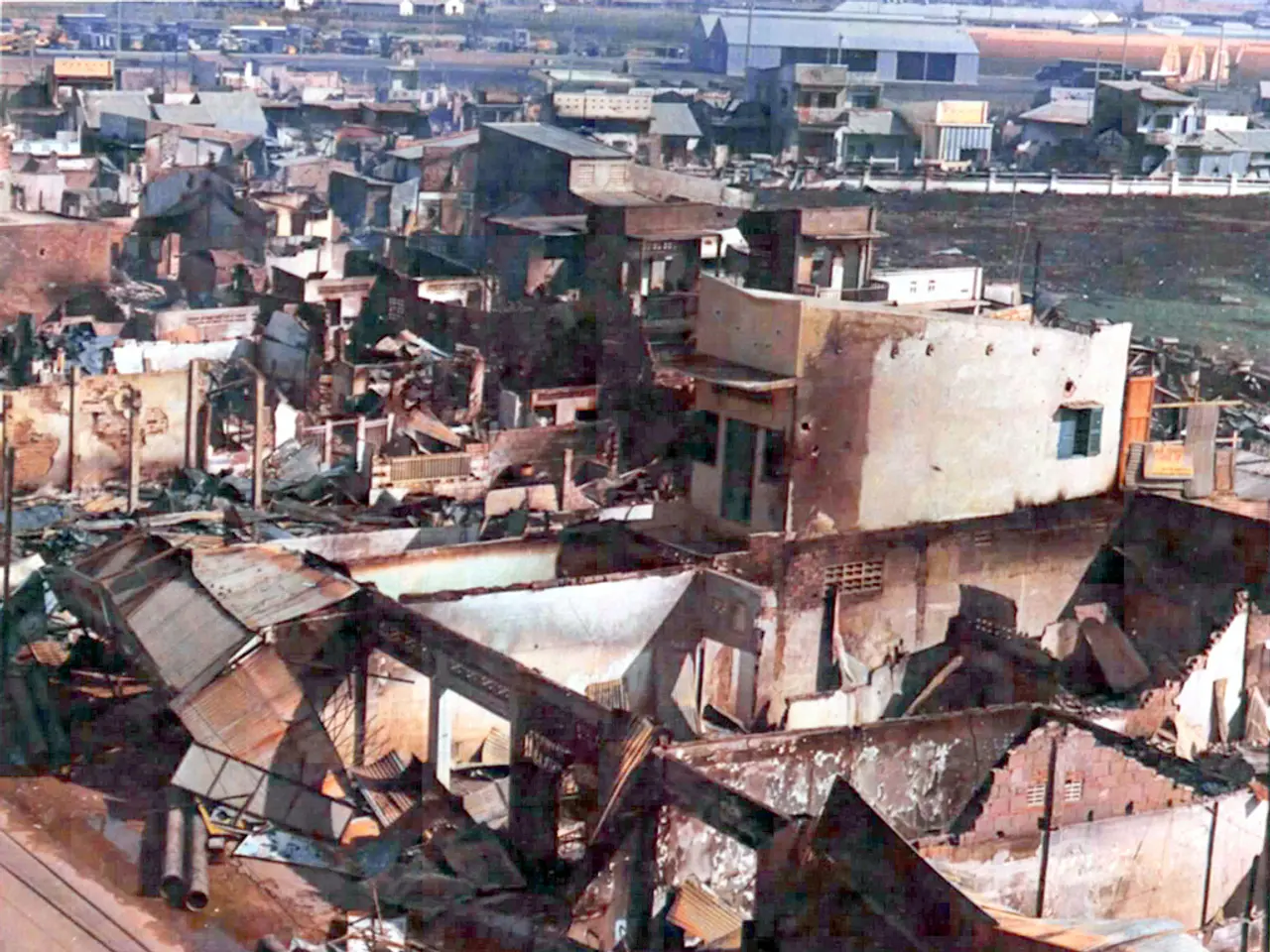Catastrophic flood engulfs Himalayan hamlet, reportedly claiming lives of 4 and numerous still unaccounted for
In the Himalayan region of Uttarakhand, India, a flash flood occurred in the village of Dharali on Tuesday. The flood, caused by a sudden bout of heavy rain, also known as a cloudburst, has left a trail of destruction in its wake.
The causes of flash flooding in the Himalayan region, specifically in Uttarakhand, are primarily heavy and sudden rainfall events such as cloudbursts, glacial lake outburst floods (GLOFs), and the effects of climate change.
Cloudbursts are intense, short-duration rainfall events caused by warm, moist air being forced upward along mountain slopes (orographic lifting), cooling, and condensing into large cumulonimbus clouds that release sudden heavy rain over a small area. This process is enhanced by atmospheric dynamics like Langmuir precipitation, causing rapid growth of raindrops and intense localized downpours.
Glacial Lake Outburst Floods (GLOFs) are another potential cause. These occur when natural ice dams weaken and collapse, sending sudden, unexpected torrents of water down steep terrain. Climate change is accelerating glacier retreat and destabilizing glacial lakes in the Himalayas, making GLOFs more likely.
Climate change also plays a significant role. Rising global temperatures increase ocean and atmospheric moisture, resulting in more water vapor available to form heavy rain clouds. The warming also destabilizes fragile mountain glaciers and soils (deforestation and unregulated construction exacerbate slope instability). Climate change modifies monsoon patterns, intensifies heat waves, and leads to increasingly erratic, extreme precipitation events, aggravating flash floods in Uttarakhand.
The steep slopes of the Himalayas act as barriers that force moisture-laden air upward, promoting heavy rainfall. Deforestation and construction in vulnerable areas reduce slope stability, contributing to landslide-triggered flooding and mudslides during heavy rains.
The flood in Dharali has resulted in the destruction of around a dozen hotels, many homes being washed away, and at least four people being killed. Many others are missing, and search and rescue operations are ongoing. The Uttarkashi District Magistrate, Prashant Arya, has requested the army to aid these operations due to numerous guest houses, restaurants, and hotels in the area.
Dozens of people could be trapped or missing, and it is most likely that these events will occur more frequently due to climate change. Agriculture and livelihoods depend on the heavy summer storms in India, but these storms can also bring such torrential downpours and flooding that the infrastructure in the region can't handle.
As the situation continues to unfold, it is crucial to understand the causes of these devastating events and take steps to mitigate their impact. By addressing the root causes, we can help protect vulnerable communities and reduce the risk of future disasters.
References:
[1] IPCC, 2014: Climate Change 2014: Synthesis Report. Contribution of Working Groups I, II and III to the Fifth Assessment Report of the Intergovernmental Panel on Climate Change [Core Writing Team, R.K. Pachauri and L.A. Meyer (eds.)]. IPCC, Geneva, Switzerland, 151 pp.
[2] IPCC, 2007: Climate Change 2007: The Physical Science Basis. Contribution of Working Group I to the Fourth Assessment Report of the Intergovernmental Panel on Climate Change [Solomon, S., D. Qin, M. Manning, Z. Chen, M. Marquis, K.B. Averyt, M. Tignor and H.L. Miller (eds.)]. Cambridge University Press, New York, NY, USA, 996 pp.
[3] IPCC, 2014: Climate Change 2014: Impacts, Vulnerability and Adaptation. Part A: Global and Sectoral Aspects. Contribution of Working Group II to the Fifth Assessment Report of the Intergovernmental Panel on Climate Change [Field, C.B., V.R. Barros, D.J. Dokken, K.J. Mach, M.D. Mastrandrea, T.E. Bilir, M. Chatterjee, K.L. Ebi, Y.O. Estrada, R.C. Genova, B. Girma, E.S. Kissel, A.N. Levy, S. MacCracken, P.R. Mastrandrea, and L.L. White (eds.)]. Cambridge University Press, New York, NY, USA, 1132 pp.
[4] World Meteorological Organization, 2019: Climate Change and Water: A GIS-based Global Analysis. World Meteorological Organization, Geneva, Switzerland. https://library.wmo.int/doc_num.php?explnum_id=9913
The intense, short-duration rainfall events known as cloudbursts are among the causes of flash flooding in the Himalayan region, specifically in Uttarakhand, because they occur when warm, moist air is forced upward and condenses into large cumulonimbus clouds, releasing sudden heavy rain over a small area. Moreover, climate change modifies monsoon patterns, intensifies heat waves, and leads to increasingly erratic, extreme precipitation events, aggravating flash floods in Uttarakhand, thus contributing to the risk of future disasters.








